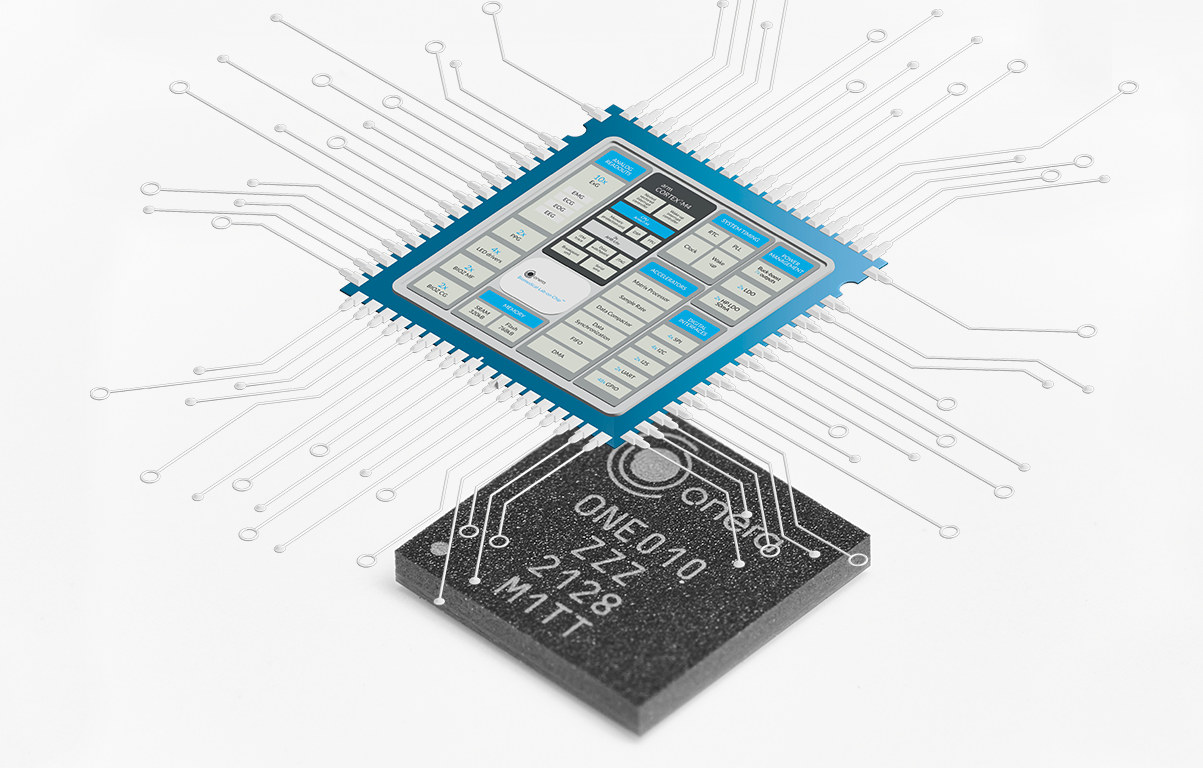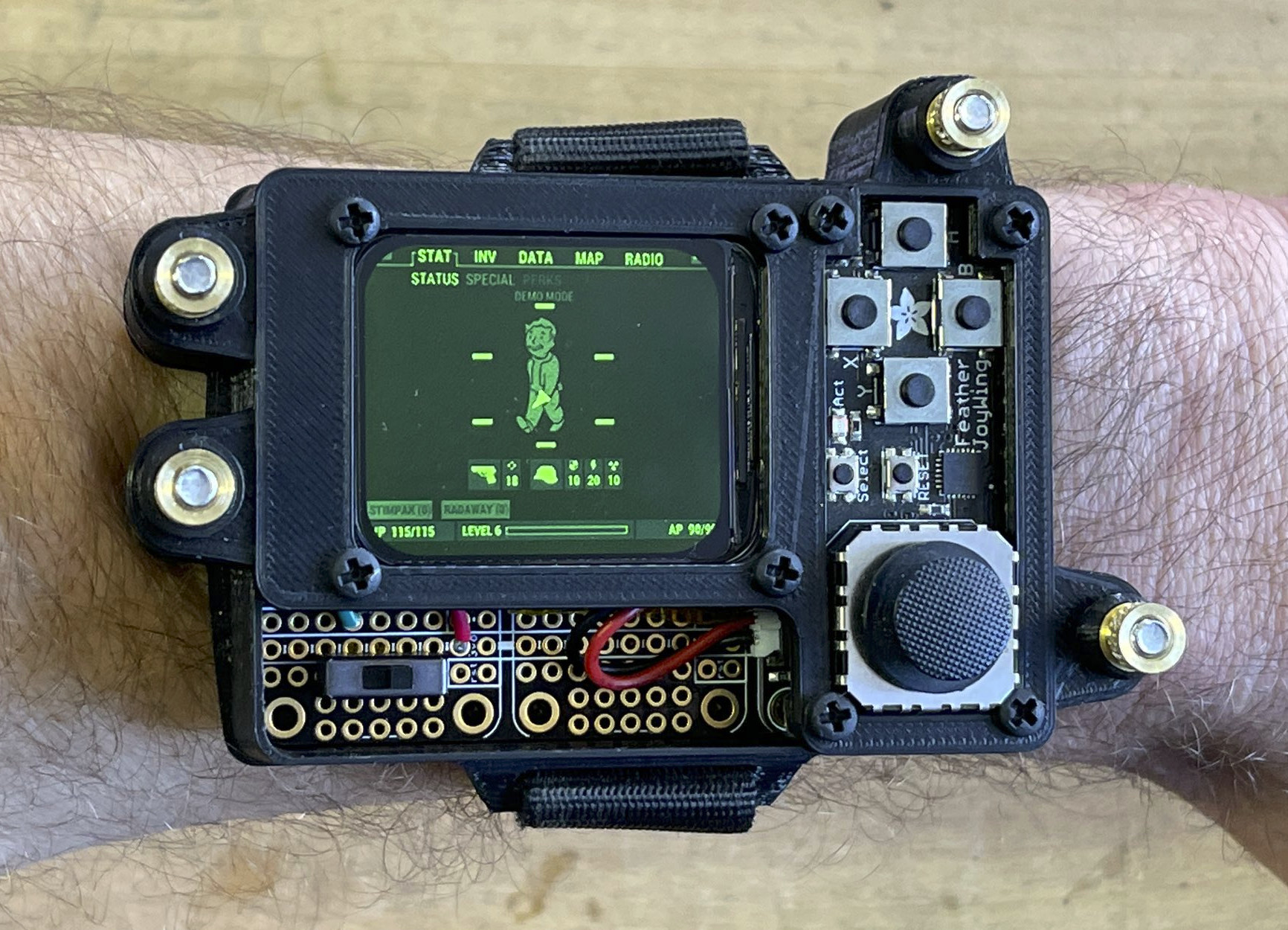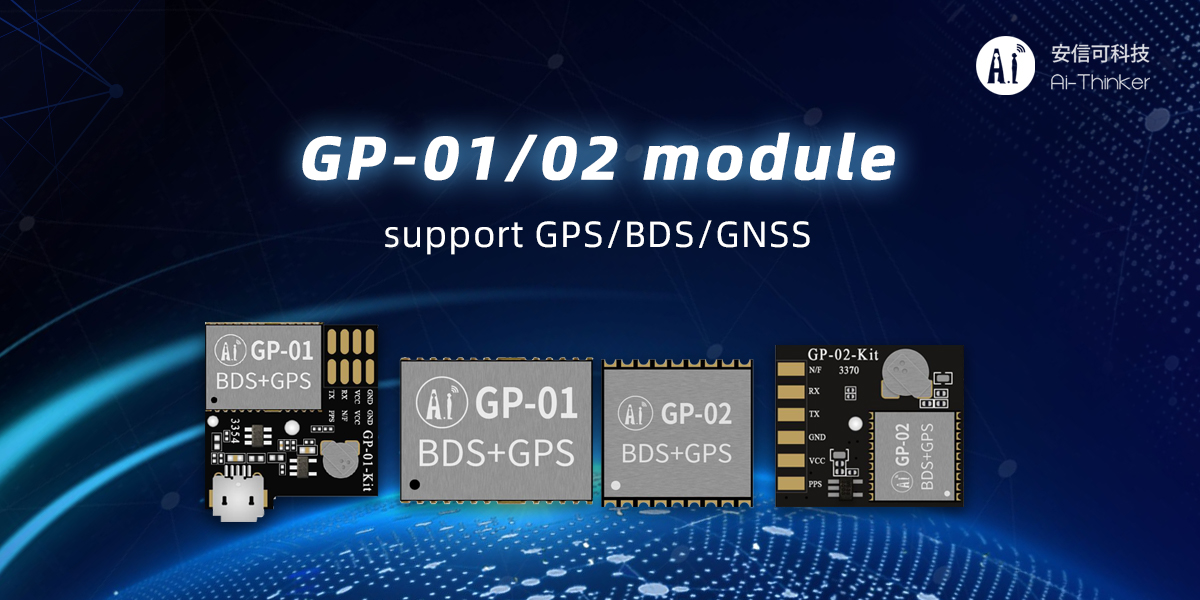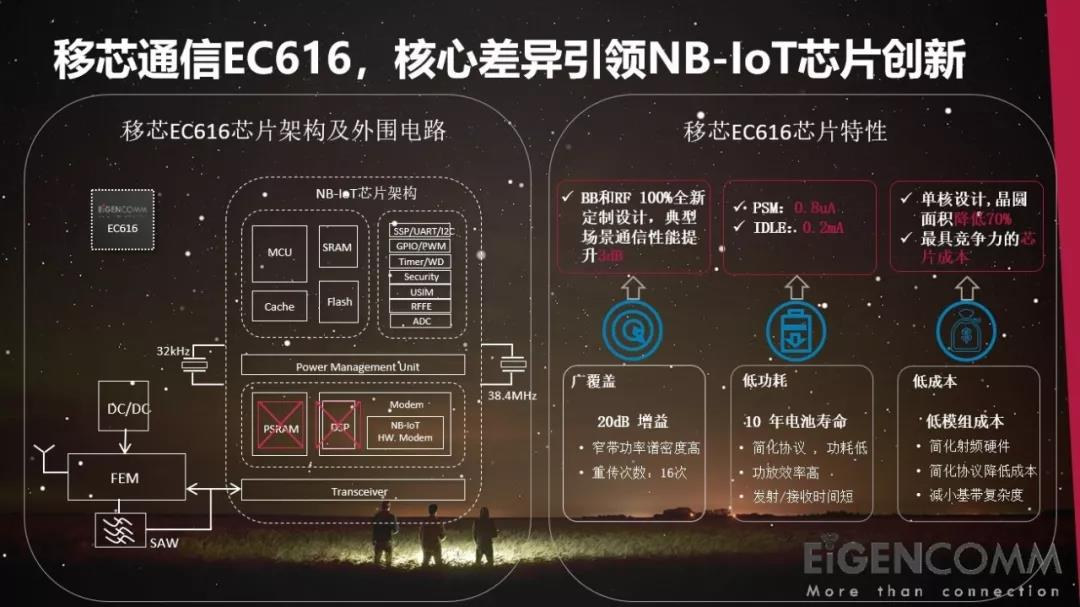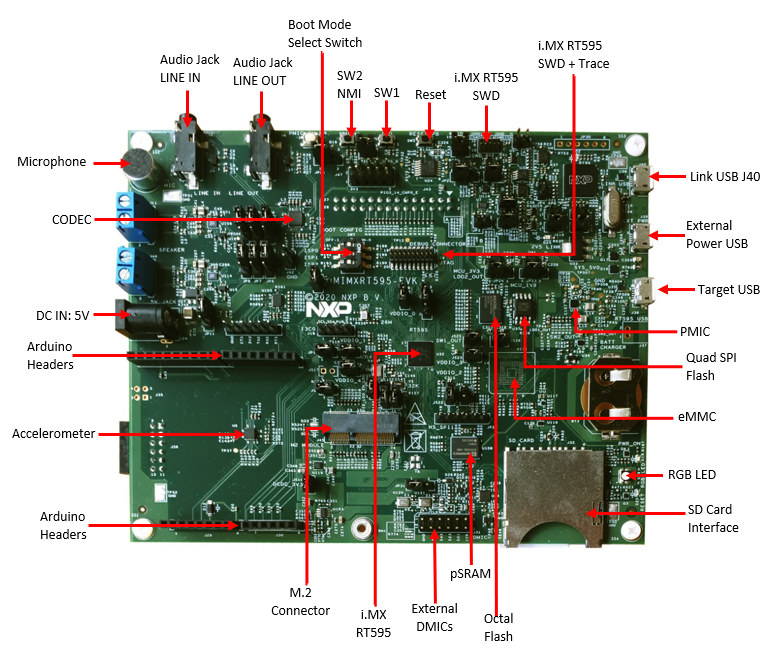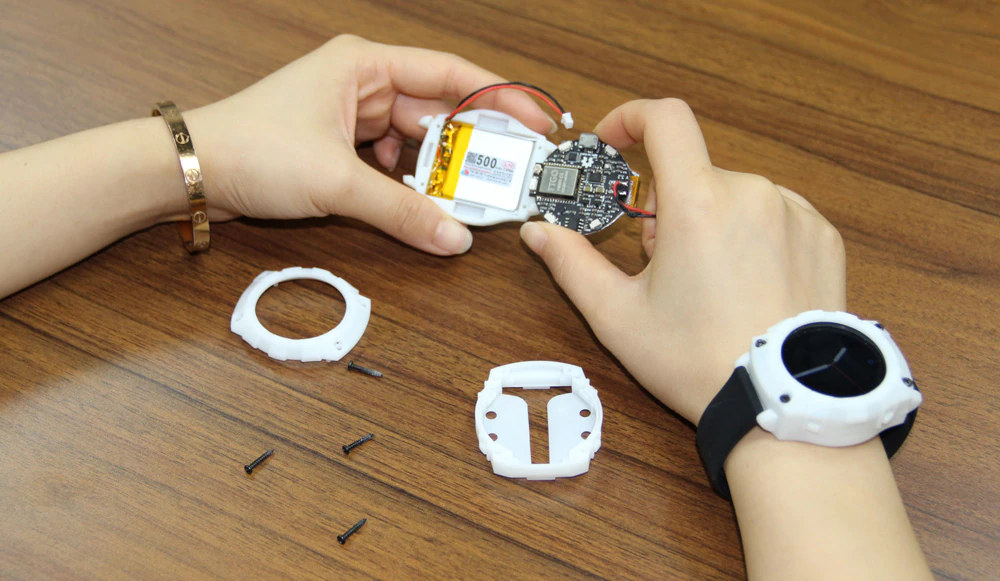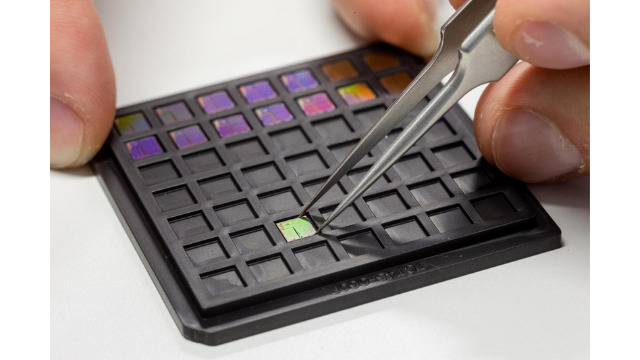Onera Health, a Dutch-American MedTech company has just introduced the Onera Biomedical-Lab-on-Chip, an ultra-low-power biosignal sensor hub for wearable health, following their earlier work on sleep diagnostic solutions. The Arm Cortex-M4F based Onera ONE010 chip embeds a multi-channel sensor readout system with integrated data processing, power management, and interfacing features. It features biomedical inputs with 10 readouts for ExG, covering EEG, ECG, EMG, and EOG, 2 bioimpedance readouts, and 2 readouts for photoplethysmography, as well as digital filters and accelerators to process the data from the sensors. The microcontroller is also equipped with several standard wired interfaces such as UART, SPI, I2C, and I2S, operates from a single power source between 0.8V and 3.6V, and the company says a large amount of SRAM and embedded FLASH is available. I’ve managed to obtain a more readable block diagram and that means 320KB of SRAM and 768KB of flash. We can also […]
DIY Pip-Boy wrist computer is equipped with Adafruit Feather RP2040 board
The Pip-Boy is a (virtual) personal information processor found in Fallout post-apocalyptic role-playing video games. But John Edgar Park decided to bring the wrist computer to (real) life combining an Adafruit Feather RP2040 board, a round IPS TFT color display, directional buttons, a joystick, and a battery. The Raspberry Pi RP2040 based Pip-Boy is programmed with CircuitPython and the demo code is a slide-show with navigation controls, but you could obviously adapt the code to your needs. The main components are: Black Adafruit Feather RP2040 board Adafruit Joy FeatherWing adding buttons and a joystick Adafruit 1.69″ 280×240 Round Rectangle Color IPS TFT Display FeatherWing Tripler mini kit to connect the two boards above and the display 3D printed enclosure A 3.7V/420mAh LiPo battery for power On/off switch The design is completed with some headers, stand-offs, screws, and a nylon watch strap. You’ll find detailed instructions with the list of parts, […]
Tiny, high-precision GPS modules target UAV’s, wearables (Sponsored)
With the rapid development of the Internet of Things, positioning requirements are getting more strict notably with the need for higher precision and smaller GNSS modules. If you are looking for compact GPS modules that support a variety of satellite navigation systems, including China’s Beidou satellite navigation system BDS, the United States’ GPS, and Russia’s GLONASS with low power consumption (3.3V, 30mA), you may consider Ai-Thinker’s GP-01 and GP-02 GPS modules offering the smallest size. The GP-01 module has a total of 24 interfaces with five GPIO pins, while the GP-02 module has a total of 18 interfaces with three GPIO pins. These two modules are also available in development boards for ease of evaluation and development. Both are cheap, reliable, and based on the state of the art technologies. Thanks to its small size of only 10.3 x 9.9 x 2.4 mm, the GP-02 module can be easily embedded […]
Eigencomm EC616/EC616S SoC supports Cat-NB2 cellular IoT
Eigencomm EC616/EC616S are Cortex-M3 microcontrollers supporting the 3GPP R13/R14 NB-IoT standard, with 3GPP R14 notably introducing the newer LTE Cat-NB2 standard allowing higher bitrates up to 127 kbps downlink, and up to 159 kbps uplink, and OTDOA and E-CID positioning methods. Both EC616 and EC616S are virtually identical, but the EC616S comes with fewer GPIOs and is designed for the lowest possible BoM cost for modules as small as 10×10 mm. Both target similar IoT applications such as wireless meter reading, smoke detection, smart street lights, smart logistics, asset tracking, smart fire monitoring, smart parking, smart home, wearable devices, industry 4.0, smart agriculture, and others. Eigencomm EC616/EC616S specifications: MCU core – Arm Cortex-M3 @ up to 204 MHz Frequency band – 663 MHz to 2200 MHz Protocol version – 3GPP R13/R14 Built-in PA output power – 23dBm Receiver sensitivity – EC616: -118 dBm, EC616S: -117 dBm Peripherals EC616 – 2x […]
Bangle.js 2 JavaScript smartwatch gets an nRF52840 MCU, a new design (Crowdfunding)
The Bangle.js 2 is an upgraded, improved version of the Bangle.js hackable, JavaScript smartwatch based on NordicSemi nRF52832 SoC that was introduced in 2019 with ESPruino open-source firmware. The new watch comes with a new rectangular design, a Nordic Semi nRF52840 SoC that offers four times the RAM, twice the on-chip and external flash, plus an always-on sunlight-readable screen with full touchscreen support, and improved Bluetooth signal strength. Bangle.js 2 specifications: MCU – Nordic Semi nRF52840 Arm Cortex-M4 MCU @ 64MHz with Bluetooth LE, 256kB RAM, 1MB on-chip flash Storage – 8MB flash Display – 1.3-inch 176×176 always-on 3-bit color LCD display (LPM013M126) with backlight, full touchscreen Connectivity Bluetooth 5.0 LE with advertising, central and peripheral mode support GPS/Glonass receiver Sensors Heart rate monitor 3-axis accelerometer, 3-axis magnetometer Air pressure/temperature sensor Misc – Vibration motor Debugging/Programming – Full SWD debug port on the rear of the watch Battery – 200mAh […]
NXP i.MX RT500 Cortex-M33 Crossover MCU integrates DSP, 2D GPU for wearables and IoT devices
NXP i.MX RT500 is the second Cortex-M33 Crossover MCU following the NXP i.MX RT600 Series announced in 2018, and optimized for low-power HMI applications such as wearables and Smart Home & IoT devices. NXP Crossover MCUs are typically clocked at 600 MHz or more, but NXP i.MX RT500 Cortex-M33 is limited to 200 MHz, and combined with 200 MHz Tensilica Fusion F1 DSP as well as a 2D GPU, and power optimizations that enable long battery life of up to 40 days on a charge for wearables like smartwatches. NXP i.MX RT500 key features and specifications: MCU Core – Cortex-M33 @ up to 200 MHz with Arm TrustZone, M33 built-in Memory Protection Unit (MPU), PowerQuad hardware accelerator for DSP functions, CASPER crypto coprocessor for asymmetric cryptographic algorithms DSP Core – Cadence Tensilica Fusion F1 DSP @ up to 200 MHz On-Chip Memory Up to 5 MB of system SRAM accessible […]
T-Watch 2021 ESP32 round smartwatch features ESP32 SoC, touchscreen, 500mAh battery
Back in May, LilyGo started selling “Paul’s 3D Things” Open-Smartwatch open-source hardware ESP32 watch as a kit with the board and a round display, but no case, wristband, or battery, although now a smartwatch kit, but still without battery, is available for around $30. The company has now designed the T-Watch 2021 which builds upon the Open-Smartwatch but adds features like a touchscreen display, a vibration motor, a magnetometer, and ships as a devkit with board and display or a complete smartwatch kit including a 500mAh battery. T-Watch 2021 specifications: Wireless module – LILYGO T-micro32 module based on ESP32-PICO-D4 module with dual-core ESP32 processor, 4MB FLASH, 2MB PSRAM, ceramic antenna and u.FL antenna connector Connectivity – Bluetooth 4.2 BR/EDR BLE and WiFi 4 2.4GHz 802.11 b/g/n Display – 1.3-inch circular touchscreen LCD with 240×240 resolution (Model GC9A01) USB – Micro USB for charging and programming Sensors 3-axis BMA423 accelerator, pedometer […]
Ultra-Low-Power RISC-V System-on-Chip features Adaptive Body Biasing Technology
CSEM and USJC together have developed an ultra-low-power RISC-V chip for electronic gadgets such as wearables. The semiconductor companies, from Switzerland and Japan respectively, have been in the market for a while, developing technologies for low-power chips. Their latest collaboration uses Adaptive Body Biasing (ABB) and Deeply Depleted Channel (DDC) to build an ultra-low-power RISC-V chip with all the required and necessary components. Originating from the labs of CSEM, the Adaptive Body Biasing dwells into the operating efficiency of all the modes of ON, Standby, and OFF. There has been the problem of power leakage in Standby and OFF operating modes, but the Adaptive Body Biasing technology helps design to minimize power leakage when the processor is not operating while keeping the best performance in ON mode. For most of the designs, the processor is in Standby mode waiting for the incoming data or the next event to be offered. […]


